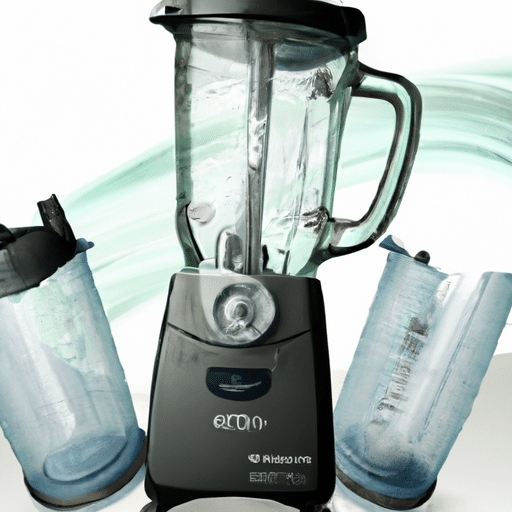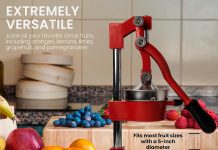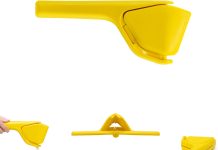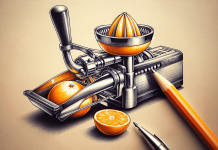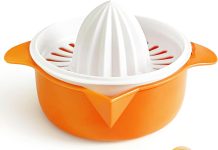Get ready to blend in! In this article, we will unveil the mystery behind the variance between a regular and high-powered blender. Whether you’re a smoothie enthusiast, a culinary connoisseur, or a health-conscious individual, understanding the disparities between these two appliances is crucial. From speed to versatility, we’ll explore the factors that set these blenders apart, ultimately helping you make an informed decision when it comes to your blending needs. So, grab your favorite fruits, veggies, and curiosity, as we embark on a journey to discover the distinct qualities that make these blenders unique.
Review contents
Motor Power
Regular blender motor power
A regular blender typically has a motor power ranging from 300 to 600 watts. This level of power is sufficient for most blending tasks in a regular household setting. It allows you to blend soft fruits and vegetables, make smoothies, and even crush ice to a certain extent. The motor power of a regular blender is designed to handle everyday blending needs without straining the motor.
High-powered blender motor power
On the other hand, a high-powered blender boasts a motor power upwards of 1000 watts, sometimes even reaching 2000 watts. This significant increase in power allows for more efficient blending and tackling tougher ingredients. High-powered blenders can effortlessly pulverize hard fruits and vegetables, grind nuts into smooth butters, and crush ice with ease. With their powerful motors, high-powered blenders offer more versatility and are better suited for demanding blending tasks.
Blending Capacity
Regular blender blending capacity
Regular blenders typically have a blending capacity of around 4 to 7 cups. This capacity is adequate for everyday blending needs, such as making smoothies, pureeing soups, or preparing sauces. It is ideal for small to medium-sized families or individuals who do not require large batches of blended ingredients.
High-powered blender blending capacity
In contrast, high-powered blenders often have a larger blending capacity ranging from 7 to 10 cups or even more. This increased capacity caters to those who frequently blend larger quantities of ingredients or need to prepare batches for multiple servings. These blenders are suitable for families, health-conscious individuals who meal prep, or those who enjoy hosting gatherings and parties.
Blade Design
Regular blender blade design
Regular blenders typically feature a basic blade design with two or four blades attached to the blending assembly. These blades are made of stainless steel and are positioned to achieve a general vortex motion to blend ingredients efficiently. While they are effective for regular blending purposes, they may struggle with tougher ingredients and require more time and effort to achieve desired textures.
High-powered blender blade design
High-powered blenders often boast more advanced blade designs, incorporating multiple blades and a unique shape. These blades are strategically positioned to create a powerful vortex that ensures ingredients are thoroughly blended and pulverized in a shorter amount of time. The higher blade speeds and innovative designs of high-powered blenders result in smoother textures, allowing you to create silky smoothies and creamy blends without any chunks.
Container Material
Regular blender container material
The containers of regular blenders are commonly made of durable plastic or glass. Plastic containers are lightweight, shatter-resistant, and often come with measurement markings for precise blending. Glass containers, on the other hand, offer a more premium feel, are resistant to stains and odors, and are generally dishwasher-safe. However, they tend to be heavier and more prone to breakage if mishandled.
High-powered blender container material
High-powered blenders often come with containers made of high-quality, BPA-free materials like Tritan or tempered glass. These materials are known for their durability, resistance to staining or scratching, and ability to withstand high-speed blending without warping or cracking. The containers of high-powered blenders are designed for heavy-duty use and can endure the demands of high-powered blending without compromising on quality or safety.
Speeds and Controls
Regular blender speeds and controls
Regular blenders typically offer a limited range of blending speeds, typically ranging from low to high or featuring a few pre-set programs. These speed options are generally sufficient for everyday blending tasks and allow you to adjust the intensity based on your preferences. Some regular blenders also feature pulse controls, which provide short bursts of high-speed blending for more precise control over texture.
High-powered blender speeds and controls
High-powered blenders often come equipped with variable speed settings that allow for more precise control over blending. These blenders offer a wide range of speeds, ranging from low to high, allowing you to tailor the blending process to your specific needs. Additionally, many high-powered blenders feature advanced control options, such as timers and pre-programmed settings, which make it easier to achieve consistent results and automate certain blending tasks.
Versatility
Regular blender versatility
Regular blenders excel in their versatility as they can handle a wide range of everyday blending tasks. They are perfect for making smoothies, milkshakes, and purees. Some regular blenders also come with additional accessories that allow for tasks like chopping, grinding, or even making small batches of dough. While they may not be as powerful as high-powered blenders, regular blenders provide enough versatility for the average user’s blending needs.
High-powered blender versatility
High-powered blenders take versatility to the next level. With their powerful motors and advanced blade designs, they can handle a myriad of tasks beyond basic blending. These blenders excel at making smoothies, purees, and soups, but they also go above and beyond by effortlessly grinding nuts into nut butter, blending hot ingredients, making fresh juices, and even creating homemade ice cream. The versatility of high-powered blenders opens up a whole new world of culinary possibilities.
Performance
Regular blender performance
Regular blenders perform well within their intended range of tasks. They blend soft ingredients easily and can handle some tougher items like ice or frozen fruits to a certain extent. However, when faced with harder or fibrous ingredients, they may struggle and require additional blending time and potentially result in a less smooth texture. Performance-wise, regular blenders are reliable for everyday use but may have limitations in tackling more challenging ingredients.
High-powered blender performance
High-powered blenders are known for their exceptional performance. With their robust motors and advanced blade designs, they effortlessly blend the toughest ingredients, leaving no chunks or fibers behind. They can quickly turn ice into snow-like consistency, grind coffee beans to a fine powder, and pulverize fibrous vegetables into velvety smooth textures. The superior performance of high-powered blenders ensures consistent and high-quality results, regardless of the ingredients used.
Price
Regular blender price
Regular blenders are generally more affordable compared to their high-powered counterparts. The price of a regular blender can range anywhere from $30 to $150, depending on features, brand, and container material. With this range of affordability, regular blenders are accessible to a wide range of consumers and provide excellent value for the everyday blender.
High-powered blender price
High-powered blenders come at a higher price point due to their advanced features, powerful motors, and superior performance. The price of a high-powered blender can start from around $200 and go up to $500 or more, depending on the brand and additional functionalities. While the initial investment may be higher, the quality, durability, and versatility offered by high-powered blenders make them a worthwhile long-term investment for those who require top-notch blending capabilities.
Durability
Regular blender durability
Regular blenders are built to withstand everyday use and are generally durable enough to last for several years. However, due to their lower power and sometimes plastic container materials, they may be more prone to wear and tear over time. With proper care and maintenance, regular blenders can provide reliable performance for an extended period, but they may require replacement sooner compared to high-powered blenders.
High-powered blender durability
High-powered blenders are engineered for durability and designed to withstand heavy-duty use over extended periods. Their high-quality materials, robust motors, and advanced blade designs contribute to their long-lasting performance. Whether it’s blending tough ingredients or running for extended periods, high-powered blenders are built to handle the demands of high-intensity blending without compromising their lifespan. Investing in a high-powered blender ensures durability that will stand the test of time.
Recommended Use
Regular blender recommended use
Regular blenders are recommended for everyday use in households where basic blending needs are met. They are perfect for individuals or small to medium-sized families who primarily use the blender for making smoothies, pureeing ingredients, or preparing sauces. Regular blenders offer ample power and versatility for the average blending tasks without breaking the bank.
High-powered blender recommended use
High-powered blenders are recommended for those who require exceptional blending capabilities and greater versatility. They are perfect for individuals or families who regularly blend large quantities of ingredients, enjoy experimenting with difficult-to-blend items, or have specific dietary requirements that call for precise textures. High-powered blenders cater to more advanced blending needs and provide professional-grade performance for those seeking top-notch results.
In conclusion, the difference between a regular blender and a high-powered blender lies in the motor power, blending capacity, blade design, container material, speeds and controls, versatility, performance, price, durability, and recommended use. Regular blenders offer sufficient power and versatility for everyday blending needs at a more affordable price point, while high-powered blenders excel in terms of blending power, performance, and durability, making them ideal for those with more demanding blending tasks. Ultimately, the choice between a regular and high-powered blender depends on individual needs, preferences, and budget.

